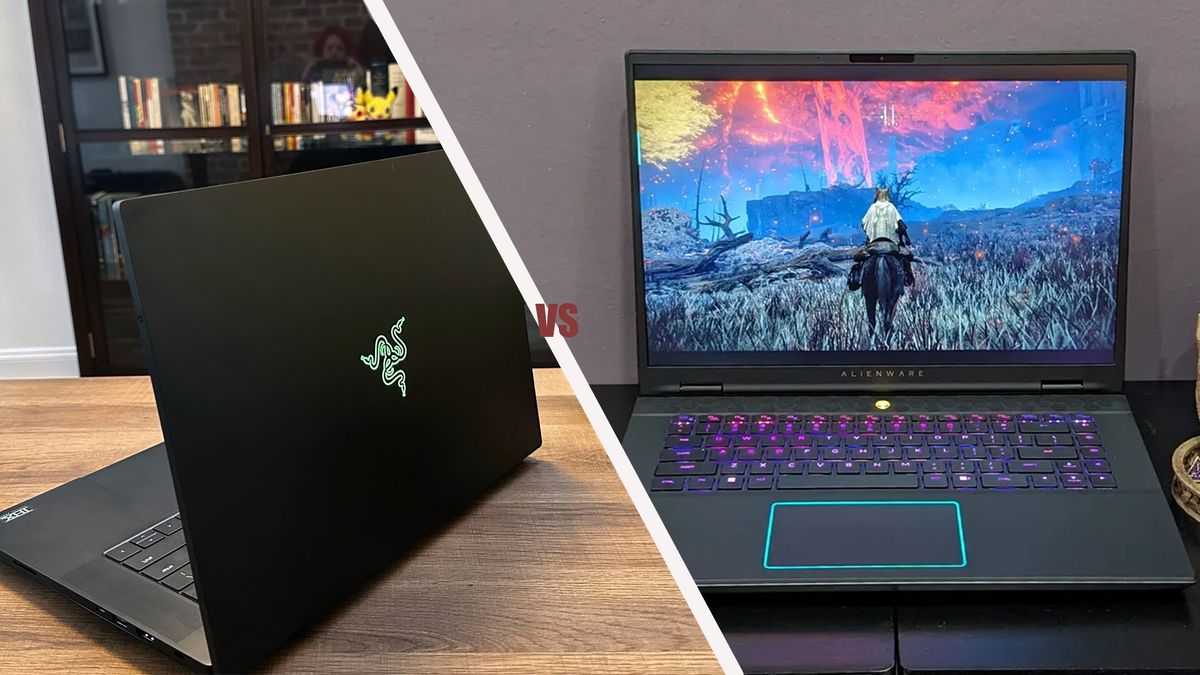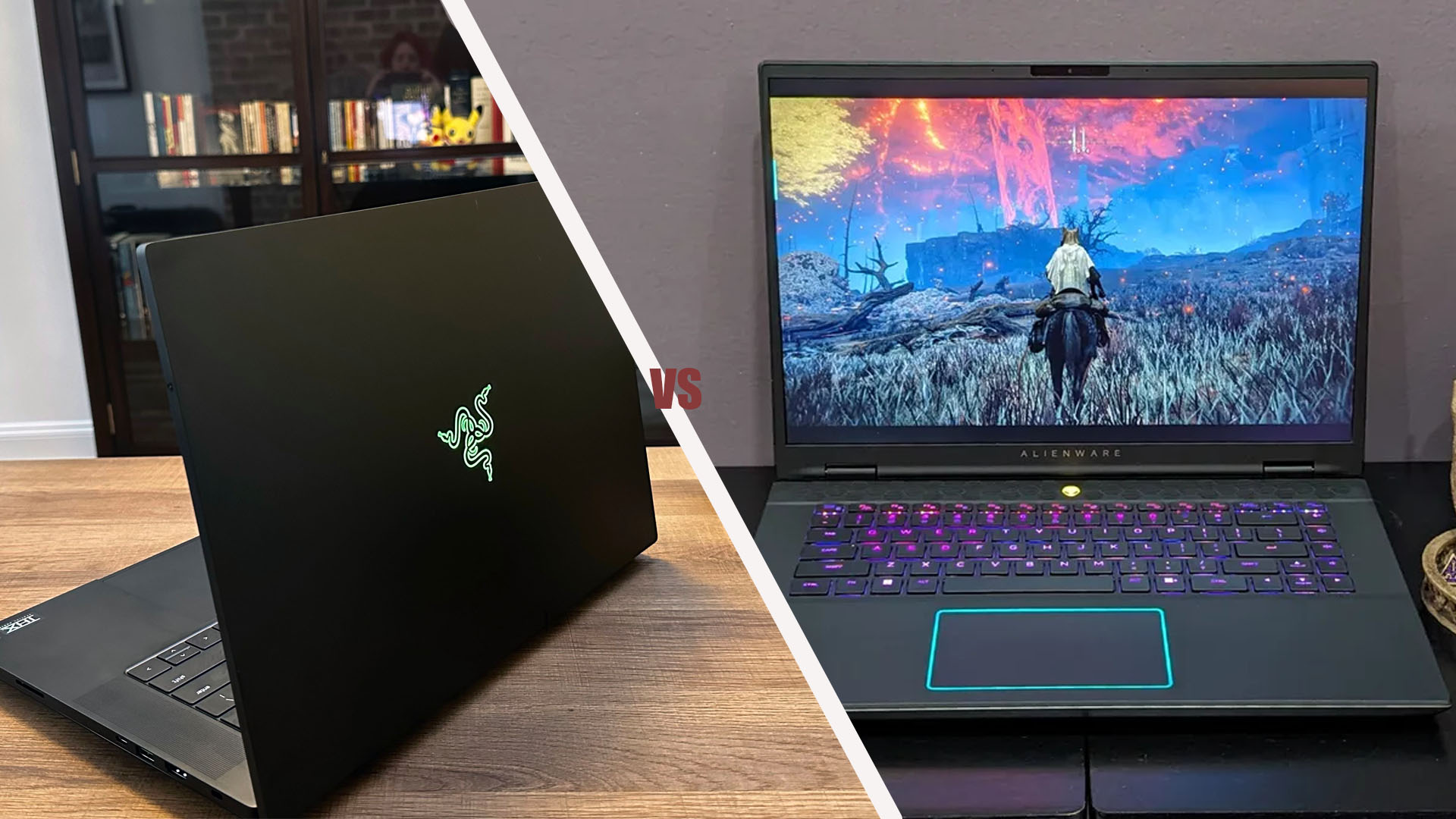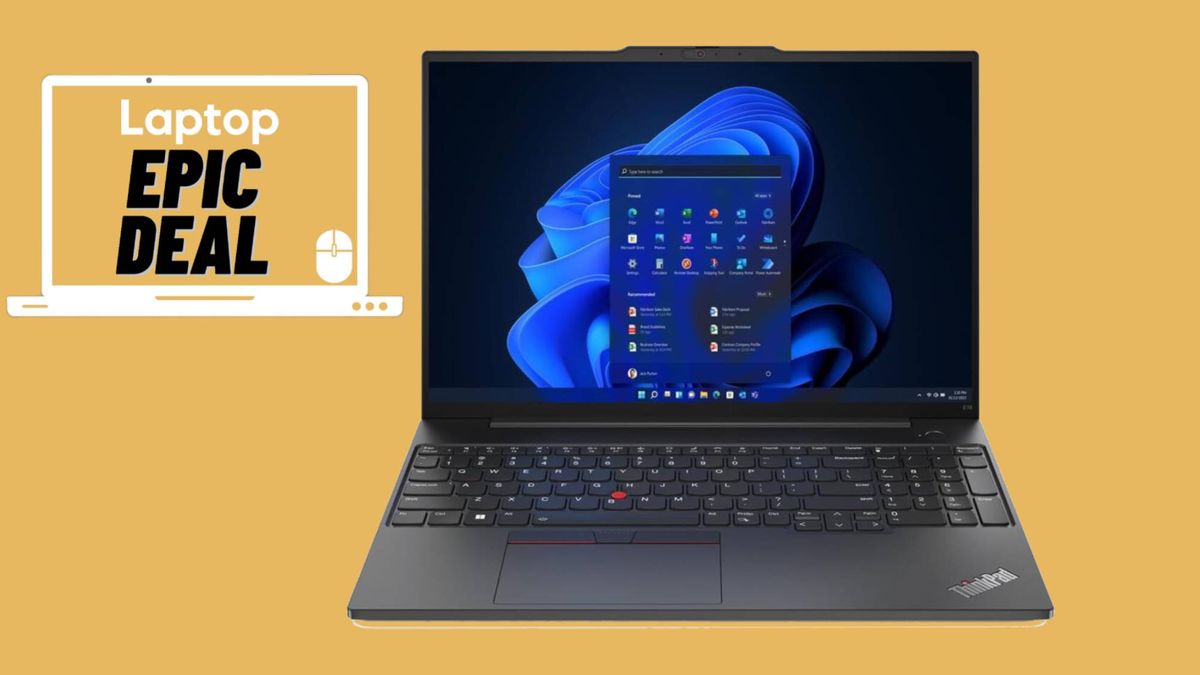

Few brands have the kind of name recognition that Razer and Alienware have held over the past few decades when it comes to high-end gaming laptops. It only makes sense to pit the Razer Blade 16 (Early 2024) against the Alienware m16 R2. Both are 16-inch gaming laptops with current-gen Intel CPUs and Nvidia GPUs from two top gaming laptop brands.Of course, the Blade 16 has a more traditional Intel Core i9-14900HX, while the m16 R2 opted for the Intel Core Ultra 7 155H AI chipset. The Blade 16 we reviewed also came loaded with an Nvidia RTX 4090 GPU compared to the m16’s RTX 4070, which makes the m16 more budget-friendly than the Blade. But is all that extra power in the Blade 16 necessary?We’re going to find out.Razer Blade 16 (Early 2024) vs. Alienware m16 R2: Price and configurations(Image credit: Momo Tabari/Laptop Mag)Price and configurable options for the Blade 16 and Alienware m16 R2 come in a rather wide range. As with all gaming laptops, there’s always a balance between price and performance, which is responsible for the truly massive disparity between the starting configurations and the fully loaded versions.The Blade 16 starts at a cool $2,999.99 for an Intel Core i9-14900HX, Nvidia GeForce RTX 4070, QHD+ OLED display, 1TB of storage, and 16GB of RAM. The fully-kitted version with an RTX 4090, dual-mode UHD+ Mini-LED display, 8TB of storage, and 96GB of memory will set you back an astounding $5,499.99. The Alienware m16 R2 starts at $1,649 for an Intel Core Ultra 7 155H, Nvidia GeForce RTX 4050, QHD+ Comfort View Plus LCD Display, 16GB of memory, and 1TB of storage. The fully specced version of the m16 with an Intel Core Ultra 9 185H, Nvidia GeForce RTX 4070, 64GB of RAM, and 8TB of storage costs $3,749.While my heart always likes to go for the flashiest possible hardware components, offering more budget-friendly options helps the Alienware m16 R2 edge out the Blade 16. You can get a high-end m16 if you’d like, but the starting price for the Blade 16 is nearly as expensive as the fully loaded Alienware. That high starting price makes it difficult to consider the Blade 16 as a gaming laptop for most gamers.Get our in-depth reviews, helpful tips, great deals, and the biggest news stories delivered to your inbox.Winner: Alienware m16 R2Razer Blade 16 (Early 2024) vs. Alienware m16 R2: Design(Image credit: Momo Tabari/Laptop Mag)Razer’s Blade design has been incredibly consistent over the last several generations, with a large touchpad and minimalist aesthetics. The Blade is close to being the MacBook of gaming laptops, with how little Razer has tweaked the chassis design over the years.Alienware’s m16 R2 went in the opposite direction and opted for a bold new redesign, shrinking the vent design, lifting the keyboard, expanding the trackpad, and providing a real palm rest. The m16 R2 is the least obnoxious Alienware we’ve seen in a long time.Both laptops are easily portable, under six pounds, and less than one inch thick. The Alienware is heavier, at 5.75 pounds, compared to the Razer Blade 16’s 5.3 pounds, although the Blade 16’s Mini-LED panel option will raise the weight to 5.6 pounds. So, with similar dimensions, it really comes down to aesthetics.While the Blade 16 has that iconic Black chassis, I love it when brands change their design language. And I’ve been waiting for Alienware to offer a less unwieldy design for years.Winner: Alienware m16 R2Razer Blade 16 (Early 2024) vs. Alienware m16 R2: Display(Image credit: Future)The display on your gaming laptop can make or break your gaming experience. No matter how good your GPU is, if your display panel can’t keep up with the graphic demands, you’re going to have a bad time.The Razer Blade 16 and m16 have 240Hz displays as the starting display panel, but the Blade 16 opts for an OLED panel instead of the Alienware m16’s LCD panel. However, the display was the weakest point on the Alienware when we reviewed it earlier this year. Compared to the Blade 16’s OLED display, the m16 is both dimmer and less vibrant. Compared to the UHD+ dual-mode Mini-LED option on the Blade 16, the m16 only fares worse.Razer’s Blade 16 QHD+ OLED offers 78.1 percent coverage on the DCI-P3 color gamut and an average brightness of 378 nits. The Blade 16 UHD+ Mini-LED covers 81.8 percent of the DCI-P3 color gamut and an average brightness of 509 nits. The Alienware m16 R2 covers a mere 69.9 percent of the DCI-P3 color space and has an average brightness of just 288 nits.Our hands-on testing impressions of both displays support the lab results, with our Alienware m16 R2 review by Momo Tabari stating: “I launched Elden Ring and explored Caelid’s crimson plaguelands, home to gigantic rotting birds and deathly beasts, but was disappointed by its subdued appearance.” Meanwhile, the Blade 16’s OLED panel, despite not being the most colorful OLED we’ve ever seen, was certainly enough to surprise me with the depth and color shown in Baldur’s Gate III, as the game was so vivid on the Blade 16 that “ almost made the Nautiloid tutorial level feel new and exciting again.”Winner: Razer Blade 16 (Early 2024)Razer Blade 16 (Early 2024) vs. Alienware m16 R2: Performance(Image credit: Future)One key difference between Blade 16 and m16 is the silicon powering both laptops. While both laptops use some of the latest Intel processors, the Alienware m16 R2 opted for the new AI Ultra 7 155H chipset compared to the Blade 16’s more traditional i9-14900HX. However, despite the difference in core counts, the Ultra 7’s new architecture held its own fairly well compared to the Core i9. The Razer Blade 16 and its i9-14900HX processor had a lead over the Alienware m16 and the Ultra 7 155H on our lab benchmarks. On cross-platform CPU benchmark Geekbench 6, the Alienware m16 had a lead on single-core performance with a score of 2,419 compared to the Blade 16’s average of 2,284, but the Blade (17,461) took the lead on multicore performance over the m16 (12,784) as expected. The Blade’s i9 does come with 24 cores compared to the Ultra 7’s 16 computing cores. The Blade 16’s lead on our Handbrake video encoding test was also rather expected as well, as the Blade 16 encoded the 4K version of “Tears of Steel” at 1080p 30FPS in just 2:48 minutes compared to the Alienware m16’s 3:46 time.Of course, when used for productivity or content creation, the Blade 16 and m16 will crush most workloads between their high-powered CPU and GPU setups. The Blade 16 has an edge on our lab benchmarks, but most gamers won’t notice a huge difference between the processors in real-world use.Winner: Razer Blade 16 (Early 2024)Razer Blade 16 (Early 2024) vs. Alienware m16 R2: Gaming and graphics(Image credit: Future)With an Nvidia GeForce RTX 4090 on board, the Razer Blade 16 (Early 2024) model that we reviewed has far more graphics processing power than the Alienware m16 R2 and its Nvidia RTX 4070. But if you’re going to game at 1080p or even just 1440p, the 4090 doesn’t have as much of a lead as you might expect, thanks to the CPU bottleneck when scaling graphics down to lower resolutions.On the 3DMark Fire Strike Ultra 4K Direct X 11 gaming benchmark, the Blade 16 QHD+ averaged a score of 12,906 compared to the Alienware m16’s 7,109 average. On the 3DMark Port Royal ray tracing benchmark, the Blade 16 QHD+ averaged a score of 13,369 compared to the m16’s 7,498. On the Assassin’s Creed Mirage benchmark on Ultra High settings, the Blade 16 averaged 130 FPS on 1080p, while the Alienware m16 averaged 101 FPS at the same resolution. On the Far Cry 6 benchmark at Ultra settings, the Blade 16 averaged 111 FPS at 1080p compared to the m16’s 89 FPS.We saw the largest difference in our gaming benchmarks in Red Dead Redemption 2. On Medium settings at 1080p, the Blade 16 provided a consistent 121 FPS average compared to the Alienware m16’s 65 FPS.While the 4090 is a mighty GPU, outside of the most notoriously demanding game we use for benchmarking, the difference between the Blade 16 and the Alienware m16 is far from game-breaking. If you run it in optimized settings, both GPUs will give you incredible, consistent frame rates, especially at screen resolutions under 4K UHD. So, while the Blade 16 performs better on our benchmarks, most gamers will see more than enough power with the m16 and the 4070 GPU. And the gaming performance of the Razer Blade 16 with a 4070 would be far more comparable to the Alienware.Winner: Razer Blade 16 (Early 2024)Razer Blade 16 (Early 2024) vs. Alienware m16 R2: Battery life(Image credit: Momo Tabari/Laptop Mag)Battery life on any laptop is important. If you can’t use the laptop when away from an outlet, it defeats the purpose of having a laptop. Desktop replacement laptops are often an exception because they’re more of an all-in-one solution than a portable computer. But the Alienware m16 and Razer Blade 16 straddle the line between portability and desktop replacement.Unfortunately, the Blade 16 and the m16 don’t have great battery life. On our general web surfing battery test that sees laptops set to 150 nits of brightness and then set to surf through a series of web pages, the Alienware m16 R2 (6:13) has the edge over the Blade 16 (4:41). Of course, the Blade 16 QHD+ is an OLED panel which often requires more power consumption. Although, the Mini-LED version didn’t last much longer (4:57).Interestingly, we saw an inversion of those results on the PCMark 10 Gaming battery test, with both laptops set to 150 nits. On the gaming battery benchmark, the Razer Blade 16 QHD (1:37) lasted longer than the Alienware m16 (00:53) by a wide margin. Not that 97 minutes is much to write home about, but it is nearly double Alienware’s benchmark time.Because most people will use a gaming laptop for more than just gaming, it doesn’t feel fair to weigh either battery test more heavily than the other. So this one will have to be a rather curious tie.Winner: TieBottom line(Image credit: Momo Tabari/Laptop Mag)Based on the number of categories won, the Razer Blade 16 (Early 2024) offers better display options, more powerful gaming, and better general performance. Of course, our test models for the Blade 16 were extremely high-spec compared to the more affordable Alienware m16. But as you can kit out the Blade 16 t to absurd levels, it will generally meet most testing benchmarks more easily than the Alienware.However, for most gamers, the real deciding factor is pricing, which means the Alienware m16 R2. Even the starting model of the Razer Blade 16 (Early 2024) with an RTX 4070 will cost more than the Alienware m16 R2 with the RTX 4070 upgrade.If you have the budget and are prepared to buy a gaming laptop at the top end of the market, the Blade 16 is the better choice for you. But for most gamers, the Alienware makes more sense.Winner: Alienware m16 R2





